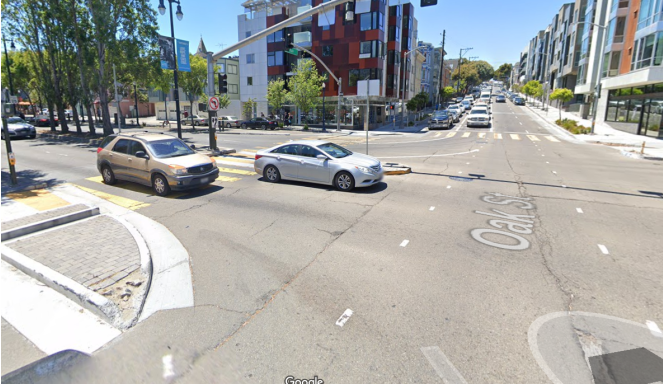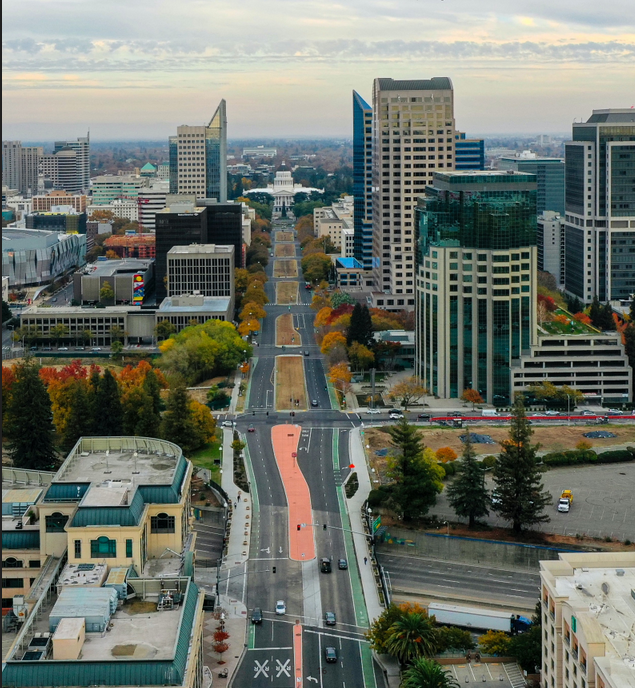Note: GJEL Accident Attorneys regularly sponsors coverage on Streetsblog San Francisco and Streetsblog California. Unless noted in the story, GJEL Accident Attorneys is not consulted for the content or editorial direction of the sponsored content.
A man on a unicycle was killed by the driver of a garbage truck Wednesday morning at Oak and Octavia. From a release from the San Francisco Bicycle Coalition:
Both this block of Oak and Octavia are on our city’s high-injury network, the 13% of streets that account for 75% of severe or fatal traffic crashes in San Francisco. Additionally, this stretch of Oak and Octavia are included in the SFCTA’s Octavia Boulevard Improvement Study, which is currently in its outreach phase. Octavia Boulevard is no longer a freeway — it hasn’t been for many, many years. We need a full redesign of this street to protect our city’s most vulnerable road users.
Meanwhile, Emelia Martinez, 73, was in a crosswalk Tuesday at 16th Avenue and International in Oakland when a driver in a white Hummer took her life. As reported in the East Bay Times, that driver left the scene and is still at large.
And over the weekend a driver killed cyclist Jonathan Waters, age 60, in North Oakland.
These latest three deaths come on the heels of an absolutely devastating month of traffic violence in the Bay Area, with at least six additional people killed in five crashes.
Could all of these deaths have been prevented by proper infrastructure, including the prodigious use of steel and concrete barriers, bollards, and traffic bells (seen below) to protect sidewalks and bike lanes?
Probably not.
But could some or even most of these victims of traffic violence have escaped death or injury if this available, inexpensive infrastructure was in place and if intersections were designed to force motorist to slow and pay strict attention or suffer damage to their cars?
Absolutely.
Just check out the Twitter feed of the World Bollard Association, which is basically a series of pictures and videos of pedestrians and cyclists escaping injury and death. For example:
Dear @BMW,
— World Bollard Association™ (@WorldBollard) January 7, 2022
We really love you.
Thanks for stopping by.
Best regards,#WorldBollardAssociation pic.twitter.com/0Ark4W7PhD
I attended a vigil last week for the family of Willa and Mary Henderson, killed while walking on the sidewalk at 3rd and Mission after a taxi-cab driver swerved onto the sidewalk and ran them down. I listened to politicians and officials give the same tired speeches about how we can't let this happen again, one death is too many, etc.
And the whole time, right behind the grieving family, I watched the multiple lanes of speeding traffic with motorists taking the smooth, gentle corners at unsafe speeds. A colleague pointed out the divots in the building at that corner from where past vehicles had jumped onto the sidewalk. Sure SFMTA has done lots with paint, lines and traffic signals, but there's absolutely nothing there nor anything planned that would physically stop an egregious driver. And all that's being talked about is more of the same.
Will SFMTA and OakDOT ever widely use concrete and steel crash barriers, such as the kind getting installed in New York and that are already common or Europe, in cities where Vision Zero has been achieved? Because people who argue that concrete infrastructure can't save the lives of pedestrians and cyclists from the most egregious drivers are simply misinformed, as demonstrated below:
Here's dashcam footage that captured an inattentive driver in New York who drove up onto the sidewalk. It's sad that the vehicle was flipped over, and I hope nobody was hurt, but note the startled pedestrians who would have certainly been severely injured or killed if not for the design of that corner and the use of a traffic bell.
🚗=🔫 🚬#WorldBollardAssociation pic.twitter.com/1m44lnbclm
— Bicis Solidarias (@Bici_Solidaria) February 9, 2022
I know officials in the Bay Area think by using inexpensive plastic and paint (and sometimes gently curving, concrete curbs) they're designing streets to keep everybody safe, motorists included. But what they're really doing is transferring the consequences of reckless driving from the perpetrators to everyone else. These past few weeks we've seen the tragic results.






